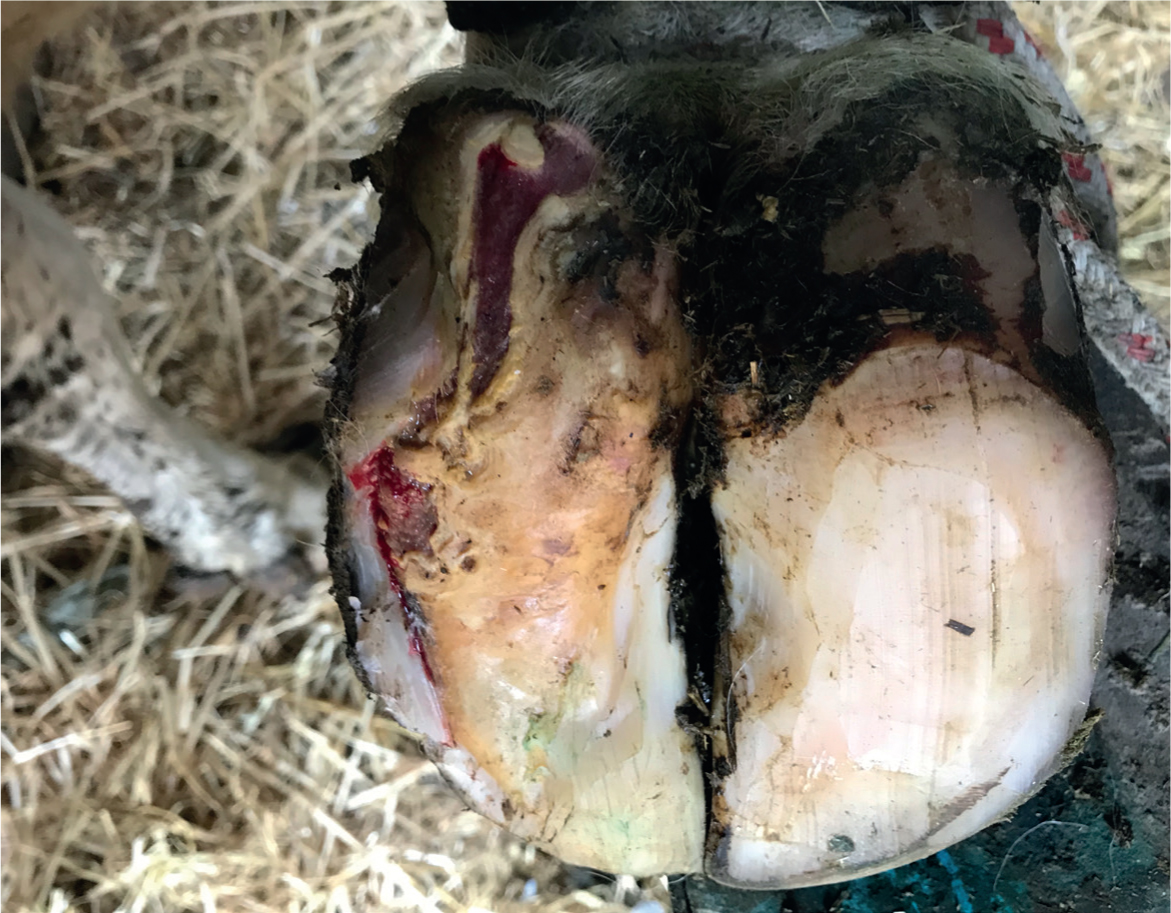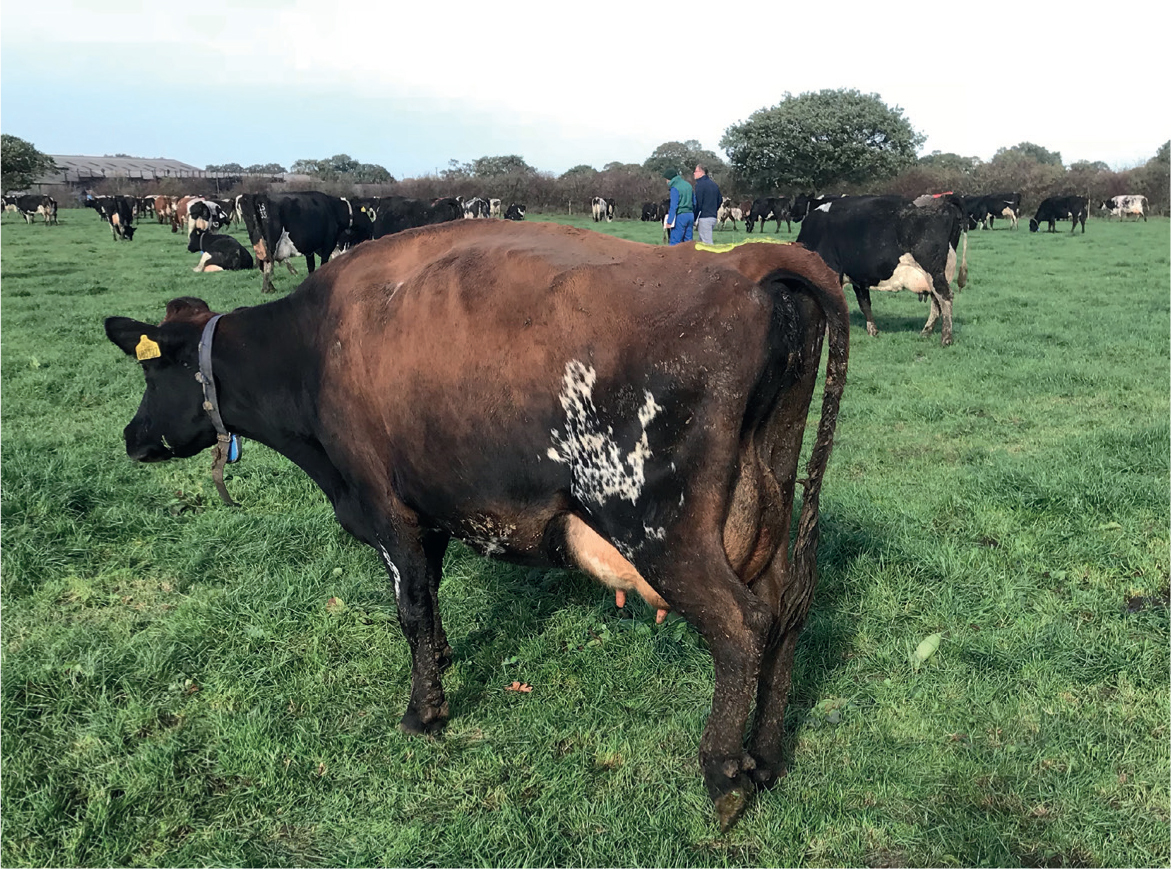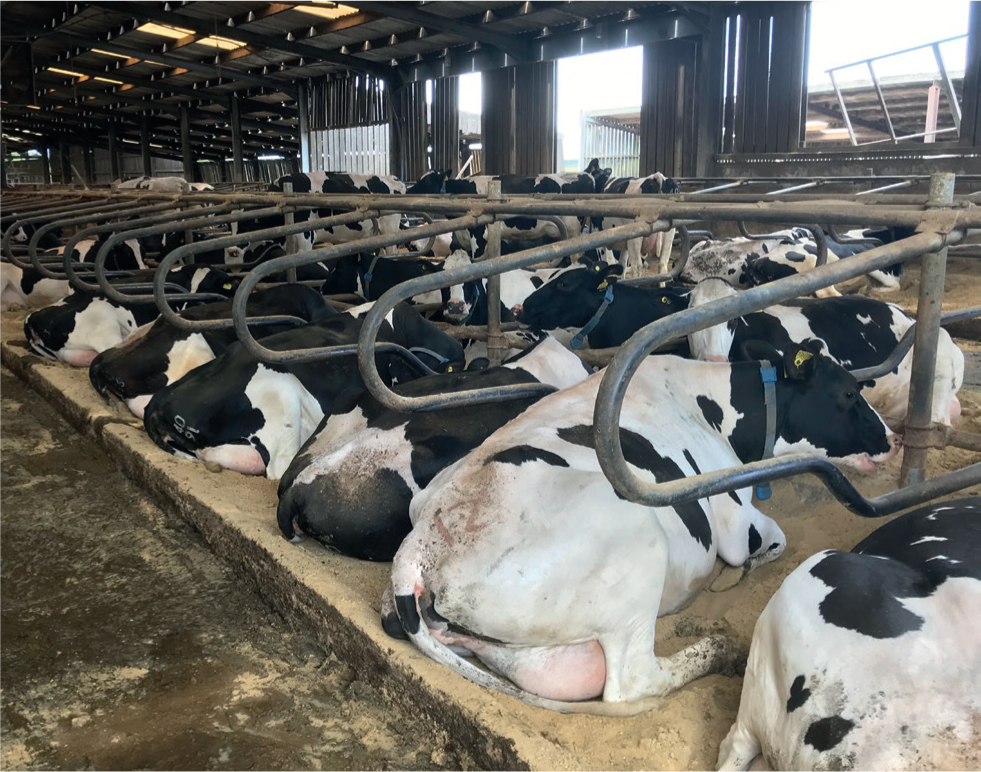Lameness is a problem in the UK dairy industry. It costs a lot of money and it gives consumers a bad impression of dairy farming. It causes poor welfare for cows. It is not necessarily straight forwards to tackle because there are many causes and there is no single solution which fits every farm the same (Figure 1).

For farm veterinary surgeons, helping farms reduce lameness is one of the most challenging aspects of their work. The reasons are many, but include that a long-term approach is required, farmers tend to under-estimate their lameness levels and almost always the financial impact, and the subject can be emotive. Identifying the best interventions, then motivating action so they are implemented, are difficult tasks requiring a multitude of skills.
This article examines some of the issues and potential ways forward.
Prevalence and costs
Around 30–32% of all adult dairy cows are lame at any one time (Atkinson and Fisher, 2013; Griffiths et al, 2018; Randall et al, 2019). That equates to 560 000 cows in GB being lame and therefore in pain every day. This is costing dairy farmers around £8.5 million each week; around £0.45 billion per year; or a mean of £42 000 per farm per year. This equates to approximately 3 pence per litre.
The financial impact has been estimated on a cost per case basis by Willshire and Bell (2009). A typical single case costs approximately £330, and this is mainly due to lower yield potential, poorer fertility, higher culling rates and reduced cull values (Willshire and Bell, 2009). Although this estimation was calculated over 10 years ago, the costs are likely to be similar today, or perhaps a little higher. It is a lot of money, but the impacts on human morale, ethics of farming and animal welfare are on top of any economic effects, and are arguably even more important.
An alternative way to estimate the financial impact of lameness is to consider that it costs around £2.20 for every day that a cow is lame (Reaseheath College, 2013). The mean length of a lameness bout is 5 months, but with a very wide range (Green et al, 2002).
Agriculture and Horticulture Development Board (AHDB) Healthy Feet Programme
In 2011, the AHDB Healthy Feet Programme was launched, whereby a trained Mobility Mentor, usually a veterinary surgeon, helps a farm reduce their lameness levels in a planned way after logically assessing the issue on that farm. The concept was based on extensive research (The Healthy Feet Website, n.d.). In 2012, additional research in North West England set out to determine whether the approach worked in practice, whether it was cost-effective and whether farmers saw the benefit (Reaseheath College, 2013).
The project involved recruiting 50 dairy farms throughout Cheshire, Shropshire and Lancashire. Half of them did the Healthy Feet Programme with a trained Mobility Mentor from their own veterinary practice, and the remaining half continued their normal approach to lameness control, but without the intervention of the Healthy Feet Programme. All farms had independent mobility scores done every 3 months for 12 months. An independent researcher interviewed all farmers at the end of the project and information was collected about what changes farmers made and how lameness levels altered over the course of the year.
Results from the North West project
The headline results indicated that the Healthy Feet Programme was effective:
- Farms that did the Healthy Feet Programme reduced their lameness by an average of 22% over the year. Farms that did not do the Healthy Feet Programme had no overall reduction in lameness
- All farms made some changes over the year to try and reduce lameness. Overall, only the Healthy Feet Programme farms had a reduction in lameness though.
- The mean cost benefit for farms doing the Healthy Feet Programme was estimated to be £6.50 for every £1 which they invested.
However, digging below the surface highlighted some unexpected results. The project investigated factors which marked out herds with low lameness and high lameness prevalences. It was initially expected that certain factors might be associated with lower prevalence, for example whether a farm foot-bathed, how the cows were housed, or the herd's yield. No significant correlations were found. However, it was discovered that the farmer's attitude towards lameness did correlate with their herd's lameness prevalence (Atkinson and Fisher, 2014). One of the conclusions of the project was that having lame cows was to some extent a choice.
Farmers with least lameness had three things in common:
- They could better estimate their lameness level
- They better recognised that lameness impacted their business
- They felt that lameness was in their control.
Farmers with high lameness prevalence were more likely to think that it was due to external factors, such as a bad spell of nutrition, a poor foot-trimmer or the weather.
Overall, farms greatly under-estimated their lameness prevalence, but again with a wide range of inaccuracy.
Lameness/mobility scoring
The AHDB mobility score system uses four scores, from 0–3. The convention is to class scores 0 and 1 as ‘not lame’. Scores 2 and 3 are classed as lame: an affected limb or limbs can be identified on close inspection of the cow walking. Score 3 is sufficiently lame that the cow's speed is affected. Put another way, score 3 cows have completely lost their ability to mask their condition. They tend to be at the back of the walking herd. In the context of wild, free-grazing herds of times past, they would be at most risk of predation. Evolutionary biology has ensured that cows have adapted to mask their lameness well.
Masking makes lameness detection a challenge. Careful observation is required; so-called ‘mobility scoring’ a herd. There is no need to mobility score a herd to find the score 3 cows (because they will already be obvious — see Figure 2), but it is impossible to know the score 2 cows without this careful observation. There is yet to be a reliable and affordable technological solution to lameness detection at a herd level which is suitable for widespread adoption.

For good treatment success (early intervention), identifying the score 2 cows is essential. Nearly every score 3 cow begins as a score 2 cow. Early detection, prompt effective treatment (EDPET) is a key element of the Healthy Feet Programme, and of herd-level lameness reduction (Groenevelt et al, 2014). The median delay to treatment for most farms is considerable: 21 days for severe cases and 70 days for mild cases (Alawneh et al, 2012).
Why do farmers under-estimate lameness and the costs of lameness?
Without doing mobility scoring, most farmers would only think of the score 3 cows when asked to estimate their herd's lameness prevalence. This would be an obvious reason why under-estimation is widespread. Typically, for every score 3 cow there are three to four score 2 cows.
Other reasons might include pride (not facing up to, or admitting, reality), or becoming ‘immune’ to seeing lame cows.
If the prevalence is under-estimated, the cost is likely to be under-estimated too. But there is more to it than that. The farmers in the North West study were asked to estimate how much they thought lameness cost. Two thirds of farmers could not give any figure, even a guesstimate. Those that did give an estimate tended to under-estimate by a factor of three. They were asked to think of reasons why lameness might have a negative financial impact. All farmers could think of at least one thing. The main reasons given were:
- Cost of treatment/foot trimming
- Reduced fertility
- Increased forced culls/lower cull value
- Reduced yields.
In fact, lameness costs for all four of the above reasons, but farmers tended to cite just one or two. This could be a further reason for under-estimating the true cost.
Considering how clear the economic impact is, certainly lame cows are far less obviously costly than mastitic cows, for example, because the milk of lame cows is still saleable. And many lame cows continue to give a surprising amount of milk, albeit less than their potential.
Finally, in the past, the costs of lameness have been expressed as £ per case. This might be suitable for mastitis, where case incidence is easy to define and record. However, for lameness, where case definition is very much more difficult, and a single case might last anything from 1 day to a whole lifetime, expressing cost in this way is not suitable. It is far preferable to use a cost per day of lameness. Overall herd costs can then be simply calculated from a single herd mobility score (herd prevalence). For example:
200 cow herd. Mobility score 2 and 3 = 25%. Number of lame cows = 50
Taking a mean cost per lame cow per day of £2.20, this is £110 per day, and £3300 per month and £40 000 per year (assuming the prevalence remains similar through the year).
Do farmers value veterinary surgeons' intervention to reduce lameness?
In light of the fact veterinary surgeons generally find it difficult to sell their services in this area (Reaseheath College, 2013), it might be a reasonable assumption that farmers do not value veterinary intervention to help them reduce lameness. Even after the North West project showed such promising results, most Mobility Mentor veterinary surgeons who were involved struggled to capitalise on this and roll out the Healthy Feet Programme for many more farms. It is disappointing that farms do not enlist the help of veterinary surgeons to a greater extent for lameness management, but veterinary surgeons can do better too in marketing themselves. It is probably unreasonable for a veterinary surgeon to expect a farmer to pay them to help reduce lameness if:
- They have no idea of how much it is affecting their bottom line
- They have no idea how the veterinary surgeon can help.
Most farmers do not think they have a problem. Those that do probably imagine they can solve it without enlisting the services of a veterinary surgeon (beyond simplistic questions such as ‘what should I put in my footbath?’).
A way forwards
Our job as veterinary surgeons is perhaps four-fold:
- Teach and use mobility scoring; mobility score 2 cows are not seen unless looked for
- Educate farmers about the impact of lameness, including that every lame cows costs a mean of £2.20 per day. It is not always obvious because no one has to write a cheque for this loss
- Demonstrate how lameness can be reduced and equip farmers with the necessary tools to do so within their own herds
- Learn new skills: coaching and mentoring to achieve results; marketing to sell our services.
The AHDB Healthy Feet Programme is the best way to do this. It does work. However, veterinary surgeons also need better support to develop more sophisticated charging models and alter their own work patterns. Lameness intervention is best suited to an initial focused activity followed by a longer-term approach which includes regular independent monitoring. A monthly fee or contract could be better than a set fee or charging an hourly rate. Involving novel formats, such as local farmer action groups, a facilitated collaborative approach, is useful too.
A good starting point for getting more involved in lameness work is to become a Register of Mobility Scorers (ROMS) accredited mobility scorer. Until some better and reliable technologies become more widely feasible, mobility scoring remains the essential tool for detecting lame cows early on most farms. Following this, it is then valuable to develop confidence in technical areas such as cubicle design, footbath protocols and evaluation of trimming (Figure 3). Becoming a Mobility Mentor and learning how to implement the Healthy Feet Programme is recommended. Courses are run by the BCVA. Models for coaching and mentoring are introduced during the 2 day training workshop. Many veterinary surgeons have found this helps them achieve better results, and the skills can be transferable to other aspects of their work too.

Conclusion
Lameness is a complex issue requiring a sophisticated level of advisory intervention. It impacts on all aspects of dairy health and production; a holistic approach is necessary. To be successful, it is likely the veterinary surgeon will need to draw on coaching and facilitation skills, which are not traditionally taught. These can be learned, and can lead to very valuable personal development which in turn can be transformative in other areas of work.
Lameness management, for a farm veterinary surgeon, can be challenging and rewarding in equal part. It is perhaps best suited to individuals who have an ability to see the bigger picture, and have sufficient confidence or desire to work outside their usual comfort zone. They will never be short of opportunity, however, and there is the potential to make enormous difference to the lives of many, many cows and the viability of dairy businesses.
KEY POINTS
- Lameness is a costly problem for dairy farms.
- There is evidence that veterinary intervention in a planned way can reduce lameness.
- Veterinary surgeons might need to develop new skills such as coaching and mentoring in order to be most successful.


